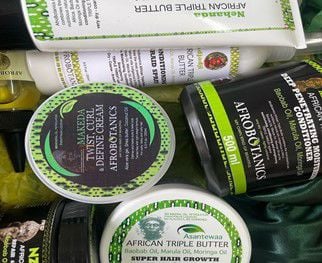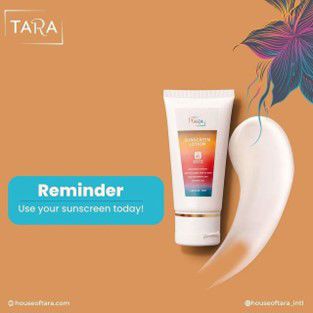African Beauty has emerged as a robust and contemporary trend within the beauty and personal care space. It is defined as a multi-dimensional concept that looks at the continent’s rich history when it comes to beauty rituals and self-expression.
The trend highlights the notion that many beauty and personal care products do not address the specific needs of African consumers
Many African entrepreneurs are already contributing to this trend, creating specific customised solutions that not only address Black skin tones and hair types but promote indigenous beauty practices that utilise natural ingredients and techniques, reflecting the cultural importance and buoyancy of the African heritage. This is an opportunity that all beauty players should not miss!
Local African ingredients and skin tones spur product innovation
The African region is often regarded as a monolithic entity when it comes to the availability of beauty and personal care products. However, its beauty traditions vary across 54 countries, each having its own distinct practices and preferences.
African Beauty innovation must not only address the specific characteristics of black tones and hair types, but embrace the traditions of the various countries as well
Source: Euromonitor International
One of the ways in which beauty players in Africa are doing this is by utilising natural ingredients that have been used for centuries in Africa and are part of their beauty regime. Examples include shea butter in West Africa and argan oil in North Africa. For example, Shea Moisture, a brand which was founded by a Sierra Leonean refugee, has capitalised on this, creating a line of hair and skin care products using shea butter and black castor oil. These natural ingredients are gaining global attention, as they are considered both sustainable and effective in everyday use.
Similarly, Kui Care is an emerging Kenyan brand that has a strong focus on formulating products specific to African hair. A key priority of the brand is utilising natural ingredients such as tea tree oil and cinnamon, while at the same time celebrating African culture and heritage through the brand and packaging.
There is continuous demand for natural and organic beauty products across the globe as consumers seek out clean beauty products
Source: Euromonitor International

Indigenous herbs are also the prominent ingredient for South African brand, AfroBotanics, which specialises in hair care specifically designed for African hair types. Its hair care range includes a diverse variety of shampoos, conditioners, hair oils and styling products. AfroBotanics emphasises the use of indigenous African herbs to promote healthy hair and scalp. Consumers are prone to trust local brands such as AfroBotanics, as these use ingredients that have long and trusted tradition on the continent, further driving demand for the products.

Equally, African Beauty transcends ingredients by taking into consideration the role of African skin tones and the African climate. One example is House of Tara, founded by Nigerian make-up artist Tara-Fela Durotye, which plays a pivotal role within the African Beauty trend. The company provides tailor-made products to suit the specific needs of the African consumer, providing products that support black skin tones, as well as provide protection against the hot African climate. This consideration comes from the observation that many African women work outside of their home and spend long hours in the sun.

Regulatory and distribution landscape provide challenges to growth
Despite the traction that the African Beauty trend has received globally and the enormous amount of promise it holds, there are certain challenges which beauty players should be aware of. Africa has complex and varying regulatory environments that adhere to different regulatory frameworks for the importation, licensing and labelling of products. Moreover, the beauty and personal care market in Africa is a fragmented one, with a very competitive landscape – a combination of both local and international players. As such, distribution can be challenging, with limited modern retailing and a strong informal retail market – trade conducted by unregistered or unlicensed retailers, such as street hawkers, open market stalls and informal shops. This makes having a solid distribution plan and strong local connections important. Thus, local strategic partnerships can be a game-changer for product success.
Furthermore, e-commerce and technology have created a significant shift in the way in which beauty products are being advertised and sold across the region. Consumers are utilising mobile apps and digital wallets to purchase beauty and personal care products, widening the avenues for product distribution. According to Euromonitor International, e-commerce in African markets such as Morocco, Nigeria, Kenya and South Africa has experienced a spike since 2019, though it has moved at a slower pace since the pandemic’s end. Nevertheless, this illustrates that consumers are using websites and apps to purchase goods and services.
African Beauty has untapped potential
Regardless of the challenges that beauty players may face in the region, the opportunities for African Beauty remain strong. There has been demand amongst African consumers to see beauty products that address their own unique skin tones, hair type and the African climate. Equally, as there are local and traditional ingredients and beauty regimes that remain important in the region, beauty products that embrace them will have an advantage over others that do not. As such, industry players need to have a clear strategy to differentiate themselves within this highly competitive market.
The African Beauty trend provides a lucrative opportunity for beauty players to innovate or expand current offerings that address African beauty ideals. However, it requires an approach where industry players are aware of the nuances around and within the broader African culture. Beauty players need to address these distinctions in their product offerings and marketing, taking into consideration the diverse skin tones, hair types, and even lived experiences of African consumers, adapting to the local needs of consumers, and respecting various cultures and traditions. Only then can they fully reap the rewards of this evolving beauty trend.
For further discussion of this topic and a deep dive into the African market, please read our report, Beauty and Personal Care in South Africa.
